Table of contents
Hemp ( Cannabis ) is one of the oldest cultivated and ornamental plants in the world. Unpeeled , raw hemp seeds come from cultivated hemp ( Cannabis sativa var. sativa ) and are a valuable food with many unsaturated fatty acids in a good LA:ALA ratio.
Use in the kitchen:
Unpeeled hemp seeds are also known as hemp nuts , they are 3-4 mm in size and have a brown to green-gray color. Unpeeled hemp seeds taste very crunchy and are particularly good for salads thanks to their nutty and slightly oily flavor. They are used, like other seeds, in muesli, smoothies, pesto, on bread or as a topping for cooked dishes. Gluten-free pea muesli can also be excellently enhanced with raw, whole or crushed hemp seeds.
The oil contained in the seeds is very sensitive to heat, which is why the seeds should mainly be eaten raw and in their natural state.
The seeds are also available roasted (sometimes also peeled and roasted). Gently roasting the seeds makes their nutty aroma even more pronounced. The unpeeled seeds are also available roasted and salted as a snack or to sprinkle on top.
To make the unpeeled hemp seeds easier to digest, it helps to soak them in water for a few hours before use. The peeled hemp seeds taste a little finer and sweeter. They have a similar use.
Hemp flour, hemp butter, hemp milk (EU: hemp drink) or hemp soup can be made from the unpeeled seeds. Hemp oil , which is obtained through cold pressing, also tastes excellent and is very healthy, but should not be used for frying processes as it is not heat stable.
If you replace some of the hops with hemp flowers when making beer, you get hemp beer. You can also make tea by brewing the leaves.
Vegan recipe for hemp drink made from hemp seeds:
Ingredients: 100 g unpeeled hemp seeds, 500 ml water to fill, 500 ml water to mix, a little sweetener (e.g. agave syrup ) or sugar as needed.
Preparation: Finely grind the hemp seeds in a food processor or blender. Put it in a blender and fill it with water, then mix everything vigorously. Now strain the milk, e.g. with a tea strainer or a fine-mesh cloth. Add sugar or sweetener and mix again briefly. Finally, pour water over it and fill it into a bottle. This milk alternative will keep in the fridge for a few days.
Vegan recipe for avocado hemp nuts as a spread:
Ingredients: 2 avocados , 3 tablespoons fresh lemon juice , 3 tablespoons unpeeled (organic) hemp seeds, sea salt ,black pepper , some caraway seeds, whole and/or ground.
Preparation: Halve the avocados, remove the pit, scoop out the flesh with a spoon and mash with a fork. Immediately drizzle the lemon juice over it and mix in the hemp seeds. Season with salt, pepper and caraway seeds. This spread tastes great on crispbread, wholemeal bread or as a dip for vegetable sticks.
Instructions for hemp sprouts:
For hemp sprouts you need a clean sprouting jar, a plate and unpeeled, germinable (not roasted) raw hemp seeds. Hemp seeds from outside the EU are often incapable of germinating, and even peeled hemp seeds are no longer germinable.
If the sprouting jar is about 0.5 to 0.6 liters in size, about 2 tablespoons of unpeeled hemp seeds are enough. First, wash these seeds thoroughly and then put them in the sprouting jar (or a bowl) filled with water. Soak them for about 6 hours and then put them in a dark place. The optimal germination temperature for hemp is about 21-23 °C, so leave the sprouting jar in a warm room or near a radiator.
After the soaking time, pour the soaking water away and rinse the seeds well with water, then pour the water off again. Now place the germination jar with the mesh lid tilted on a small plate so that the remaining water can drip off. Hemp germinates in the dark, so it needs a dark place to germinate - or you can cover the jar with a cloth.
To ensure that the seeds always have enough moisture and that no mold can grow, they should be rinsed at least twice a day. To do this, pour fresh water into the glass and swirl the glass so that all the seedlings are covered and can absorb the water. This process can take a few minutes, then pour the water off and position the germination glass at an angle.
After about 3-4 days, the hemp begins to germinate; if you leave the seedlings in the germination jar for another day, sprouts will form. Seedlings or sprouts can be used immediately in salads, as a spread on bread or as a topping for other dishes. If you store the sprouts in the refrigerator, they stop developing and you can keep them there for a few more days.
However, sprouts taste best when they are as fresh as possible and the risk of mold is then very low.
Vegan recipes with unpeeled hemp seeds can be found under the note: " Recipes that have the most of this ingredient ".
| Not only vegans or vegetarians should read this: Vegans often eat unhealthily. Avoidable nutritional mistakes. |
Shopping - where to buy?
You can find hemp seeds in selected supermarkets such as Coop , Migros , Spar , Rewe and Edeka . However, hemp seeds are not always available unshelled there, but often shelled. Denner , Volg , Aldi , Lidl , Hofer etc. do not have hemp seeds in their standard range, but sometimes they are available as part of special offers. Certain supermarkets also offer hemp nuts in organic quality. Always organic, sometimes even Demeter , you can find unshelled (and also shelled) hemp seeds in health food stores, organic shops or organic supermarkets such as Denn's Biomarkt or Altnatura . Hemp seeds can also be purchased online, where the country of origin is usually listed. Since the area of cultivated hemp is also increasing in Europe, there are usually regional products to buy too. The prices often vary greatly, so it is definitely worth comparing prices.
If possible, you should prefer organically produced, unpeeled, unroasted, unsalted hemp seeds in raw food quality when buying, so you are guaranteed an unprocessed product of the best possible quality.
Found in the wild:
Wild hemp ( Cannabis sativa var. spontanea ) is cultivated and found in all temperate to tropical zones almost worldwide. Wild hemp normally does not reach more than about 3 meters in height and the seeds are somewhat smaller than those of the cultivated form. 1 Based on finds in Georgia, the first use of fiber from wild-collected hemp can be dated to about 30,000 years ago. 2
Storage:
Hemp seeds should always be stored in a cool, dry place, protected from light and ideally in an airtight container. If the unpeeled seeds are damaged, the oil will leak out, which oxidizes very quickly and can then taste rancid.
Ingredients - nutritional value - calories:
Unpeeled hemp seeds have a very high energy content of around 553 kcal/100g. This is mainly due to the high fat content of around 49%. The protein content is also very high at 32% and the carbohydrate content in hemp seeds is around 8.7%. The fiber content in unpeeled hemp seeds is very high. 3
Because the fat content is very high, high-quality hemp oil can be made from it. Oil from unpeeled hemp seeds has a greenish color because the shell contains chlorophyll. It also contains bitter substances and fiber. The oil is extremely valuable because it contains around 80% polyunsaturated fatty acids, especially the essential fatty acids linoleic acid (omega-6) and alpha-linolenic acid (omega-3). Thanks to a ratio of around 3:1 (LA:ALA), hemp seeds are considered very healthy. For more information, read the box link above.
Unpeeled hemp seeds also contain a high proportion of manganese . With 7.6 mg of manganese per 100 g, around 26 g of unpeeled hemp seeds cover the entire daily requirement of this trace element. Dried thyme has similar manganese values at 7.9 mg/100g. Other dried herbs or, for example , cloves (ground or whole ) exceed this value even more significantly. They have 60 mg of manganese per 100 g. Manganese is important for the formation of cartilage and connective tissue. 3
Phosphorus is very well represented in unpeeled hemp seeds with 1,650 mg/100g.Dried pumpkin seeds have a similar amount of phosphorus at 1,233 mg/100g, while baking powder has a significantly higher value at 8,430 mg/100g. Phosphorus is considered an essential macronutrient and is very important for bones, teeth and cell membranes. An average intake recommendation from DA-CH reference values is around 700 mg per day. If you eat unprocessed, natural foods, this requirement can be met very well. Natural phosphorus is not harmful either. However, with added phosphoric acid in soft drinks or phosphates in ready-made products and processed cheese, you can significantly exceed the recommended amount, which can lead to a reduction in bone density. 3
Hemp seeds also contain a lot of magnesium . At 700 mg/100g, this value is similar to that of dried basil (711 mg/100g). This essential element is important for many enzymatic metabolic processes. 3
Unpeeled hemp seeds also contain zinc , potassium , iron and small amounts of calcium . The proportion of B vitamins, especially vitamin B 1 (thiamine) and vitamin B 2 (riboflavin), is relatively high. 3 The seeds contain all eight amino acids essential for humans, making them particularly suitable as a source of protein. They contain proteins such as globulin edestin and are very easy to digest, but the low lysine content limits the protein value. 4
Do hemp seeds have an effect? Regardless of the variety, hemp seeds do not contain THC (tetrahydrocannabinol) or other intoxicating ingredients. This substance is only found in female plants, in the resinous glandular hairs of the lanceolate serrated leaves. Within the EU, only hemp that contains less than 0.2% THC is permitted. 5
You can find all the ingredients, the coverage of the daily requirement and comparison values with other ingredients in our nutrient tables. In the article Nutrients explained you will get a detailed insight into the topic. CLICK FOR under the ingredient image.
Health aspects - effects:
Are hemp seeds healthy? The unsaturated fatty acids in the hemp oil contained in the seeds are particularly important for health. The ratio of omega-6 to omega-3 fatty acids in hemp oil is particularly good at around 3:1. Linoleic acid (omega-6) and alpha-linolenic acid (omega-3) should actually be present in equal proportions. However, the pro-inflammatory omega-6 fatty acids usually predominate in the diet compared to the anti-inflammatory omega-3 fatty acids. Linseeds have a ratio of 1:3.7, chia seeds 1:3.3 and lupine seeds 4.4:1. This ratio should always be taken into account, especially when using oils. For example, cold-pressed rapeseed oil has an LA:ALA ratio of 2:1. Coconut oil , on the other hand, contains a lot of unsaturated fatty acids and, with an LA:ALA ratio of 127:1, has too many pro-inflammatory fatty acids.
From linoleic acid, the body synthesizes gamma-linolenic acid (GLA), which can affect inflammation, nerve conduction, and blood pressure. 5,6 But we have too much of it in the Western diet. The key factor is the ratio between omega-6 and omega-3, which is very favorable in hemp seeds (see above).
Hemp seeds are often referred to as a superfood because, in addition to their high nutrient content and important essential amino acids, they also contain many antioxidants. Phytol in particular is said to fight free radicals. Regular consumption is said to slow down the aging process, strengthen the immune system and protect against the development of new diseases. 8
Unpeeled hemp seeds have a very high fiber content, which supports digestion and helps cleanse the intestines. In addition, an increased fiber content increases the feeling of satiety in the body and regulates blood sugar levels. However, too many unpeeled hemp seeds can lead to an unpleasant feeling of fullness or flatulence. How many hemp seeds per day? To start with, you can take about 1/2 tablespoon per day, but you can increase this to 1 tablespoon per day, depending on how well you tolerate it.
Hemp seeds are gluten-free and lactose-free and there are no known allergic reactions to hemp protein.
Dangers - Intolerances - Side effects:
When cleaning hemp products (seeds and fibers), the dust that develops can lead to bioaccumulation in the lungs. Mammals cannot break down these inhaled cellulose fibers due to their glycosidic bond and can develop a disease called byssinosis (also known as: hemp worker's lung, Monday fever, weaver's cough, etc.). 10
Use as a medicinal plant:
Rubbing hemp extracts from Indian hemp ( Cannabis indica ) into injured muscles and tendons is said to have a soothing effect on severe pain. 11 However, this effect is not known for industrial hemp.
Occurrence - Origin:
The origin of Cannabis sativa is thought to be in Central Asia or Central Europe. 1 Finds show that hemp has been cultivated in China for around 5000-6000 years. From ancient times until the 20th century, hemp was used to make clothing, hemp ropes, cables, ship rigging, bandages 12 and paper. In Europe, hemp was also used as the most important textile fiber until the 19th century. 13
Since the mid-1980s, the cultivation of industrial hemp has been increasing again, and in the 1990s the EU states even subsidised its cultivation very intensively. Today, the fibres are used primarily in textile production and also as insulation material. 14
Cultivation - Harvest:
Sowing takes place between mid-April and May using grain drills. Hemp is very easy to care for, there is hardly any need for weed control and, due to its insect-hostile ingredients, hardly any plant protection measures are required. The deep-growing roots loosen the soil, which is particularly useful when crop rotation is taking place. 5 As a self-tolerant plant, hemp also accepts cultivation on the same area for several years in a row.
The seeds are harvested between September and October using modified combine harvesters and a low-temperature drying process to remove any remaining moisture from the crop.
Risk of confusion:
It is most likely to be confused with Indian hemp ( Cannabis indica ), which is used as a drug and medicinal plant. The flowers and leaves near the flowers of the female Indian hemp plant were used in China and Egypt as an antispasmodic and sedative. 13 The cultivation of this type of hemp is prohibited by law.
Animal protection - species protection - animal welfare:
Although industrial hemp does not produce fragrant nectar and does not offer colorful petals, bees are attracted to hemp. Hemp plants do not actually depend on bees for pollination because they use wind pollination. However, the male plants produce a lot of pollen and this serves as a source of protein for the bees. There is also hardly any food available for bees during this time, which is why hemp is an excellent source of food in late summer. Bees lack cannabinoid receptors, which is why there is no need to worry about a relaxing or intoxicating effect on bees. 21
General information:
The term “useful hemp”, “industrial hemp” or “cultivated hemp” refers to the cultivated form of Cannabis sativa var. sativa that is grown for commercial use other than as a drug or medicine. There are many forms and subspecies of the genus Cannabis sativa , including those with psychoactive ingredients (concentrated hashish oil can contain up to 70% THC, the resin up to 25%). The difference between C. sativa and C. indica is less about the active ingredients, but rather about certain characteristics of the plant type that differ. C. sativa grows very tall and has narrow leaves, and the plant can also be grown outdoors.
C. indica , on the other hand, grows stocky and bushy with broad and strong leaves. Cannabis indica var. spontanea plays the biggest role as a drug and medicinal plant. Depending on the variety, the THC content can vary greatly; fiber hemp contains almost nothing, others can contain up to 25%. Some synonyms are: C. foetens, C. macrosperma, C. orientalis, C. sativa var. kif, C. sativa var. indica, C. sativa ssp. indica . 1
By breeding hybrids from these two types, the THC content could be reduced.
Cannabis ruderalis was used in prehistoric times in Central Asia for purification and burial rituals. Female inflorescences in particular were dried and smoked or used as incense. Cannabis ruderalis was used in Mongolian and Russian folk medicine to treat depression. The THC content is around 40%. 1
The effects of THC (tetrahydrocannabinol) are euphoric, stimulating, muscle-relaxing, antiepileptic, anti-nausea, appetite-stimulating, bronchodilator, blood pressure-lowering, mood-enhancing and pain-relieving. CBD (cannabidiol) has no psychoactive effect, but has a sedative and pain-relieving effect. CBN (cannabinol) is slightly psychoactive, lowers intraocular pressure and is antiepileptic. CBG (cannabigerol) is not psychoactive, but has a calming, antibiotic and also intraocular pressure-reducing effect. CBC (cannabichromene) is also calming and promotes the pain-relieving effect of THC. 1
There are currently 42 varieties with low THC levels certified for cultivation in the EU. The THC content is less than 0.2% and they are therefore unsuitable as narcotics. This limit varies from country to country; in Switzerland it is less than 1%. 15
It is not the hemp seeds but rather the leaves of Cannabis sativa that are used as medicinal hemp. The psychoactive substance THC (tetrahydrocannabinol) is extracted from low-THC industrial hemp (by extracting cannabidiol CBD) using very complex, partially synthetic processes. This application is mostly found in countries where extraction from THC-rich varieties is not legally possible. This process also works with the terpene limonene, which is found in citrus fruits. 9
Alternative names:
Hemp seeds are also called hemp nuts or sometimes hemp hearts.
The use of common names for the hemp plant varies from region to region, and a distinction is usually made between male and female parts of the plant. For female plants, Wikipedia writes: Hahn, Hänfin, Hanfhahn, Honef, Mäsch, Mesch, Saatbogen, Saathemp, Sehmer and Tregel.
Alternative names for male plants are: Bästling, Bösling, Bast, Feimlen, Femmel, Fimme, Fimmel, Geilhemp, Geilsjehemp, Güstehemp, Hämpinne, Hanfhenne, gelje Hemp, Henne, Maschgelt, Pastök, Semmelhanf, Trigel.
Gender-independent names are: Hämp, Hanaf, Hanel, Hanif, Hannarpe, Hanof, Hanuf, Harf, Hauf, Hemp, Henef, Hennig and Werch. 16
In English, the hemp plant is known by its Latin name Cannabis sativa , and hemp seeds are called hempseed(s) or hemp seed(s). Unpeeled hemp seeds are called unpeeled or unshelled hemp seeds.
Other Latin synonyms for Cannabis sativa are: C. americana, C. chinensis, C. culta, C. erratica, C. generalis, C. gigantea, C. intersita, C. lupulus, C. macrosperma, C. sativa monoica, C. sativa ssp . culta. 1 The synonyms for popular names listed by Rätsch are too numerous to list here. 1
Keywords for use:
Hemp, mainly Indian hemp, is also used as a medicine. The use of medical hemp is permitted in many countries under strict guidelines and only with a doctor's prescription. THC and CBD (cannabidiol) are used in certain cancer therapies and diseases such as spasticity (e.g. multiple sclerosis or paraplegia), epilepsy, movement disorders (tremor) or chronic pain. 17 Much research is still pending in this area.
Industrial hemp is primarily grown to produce hemp fibers, but in addition to the hemp seeds and the oil extracted from them, there are also uses for the flowers and leaves, for example for the production of essential hemp oil.
This essential oil is used to flavor iced teas, cough drops, hemp beer and chocolates. In cosmetic products, it is mainly used for perfumes. Hemp oil can also be found in the cosmetics industry, especially in natural cosmetics, and in the Orient it is still used today as lamp oil. In massage oils, essential hemp oil is said to have an anti-inflammatory effect, relieve tension, and relieve cramps, swelling and phantom pain. Used in aromatherapy, it has a relaxing, balancing effect and cleanses the respiratory tract. 18 The typical smell of cannabis plants does not come from the cannabinoids, but from the volatile mono- and sesquiterpenes, such as caryophyllene oxide. This substance also serves as a lead substance for hashish-sniffing dogs. 19
Hemp shivs are used as bedding for animals. These are relatively evenly broken, wood-like particles that are produced during the mechanical process of deforestation (decortication) of the plant stem during the production of bast fibers, in this case hemp fibers. Seeds and press residues from oil production also serve as high-quality animal feed.
The long fibers of hemp are used primarily in textile production due to their tear resistance. Lower fiber qualities (tow) are used to seal pipe threads. Hemp is also quite popular as an insulating material for building houses because it does not rot well, is harmless to health and is resistant to pests. Short fibers are used in cellulose, nonwovens, special papers and natural fiber-reinforced plastics, including in interior paneling in automobile construction. 20
Literature - Sources:

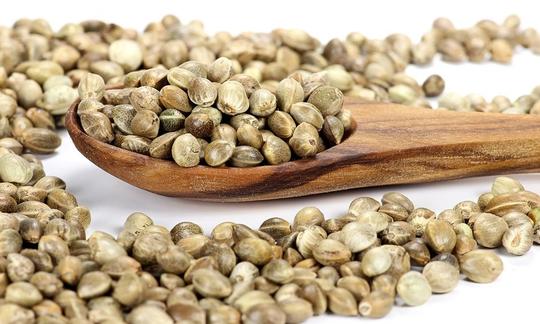

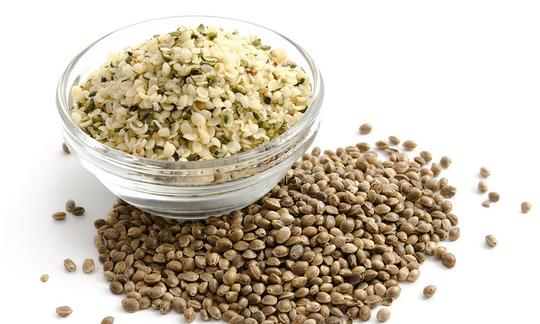

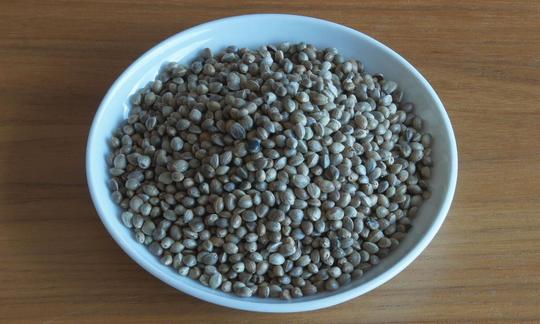

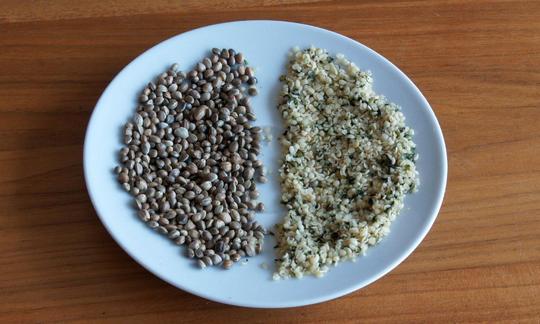

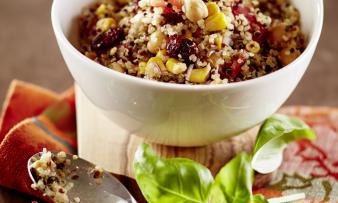
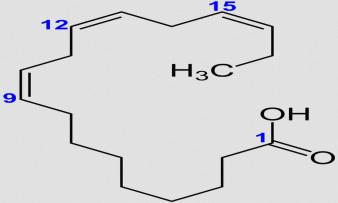




Comments